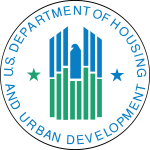The Real Story…
News and commentary about the real estate market and related topics.
Dave Parrish, ABR®, CSP, GRI, ePRO®,REALTOR ®, RE/MAX MarketPlace
The opinions expressed here are my own and don’t necessarily represent those of RE/MAX International.
Down Payment Requirements…
A key element of buying or selling a home in today’s market is how much the purchaser will have to provide as a down payment on the home in order to get a mortgage. As with almost every aspect of today’s real estate market there are no simple answers. However, a general rule of thumb is the lower the down payment requirement, the more prospects a seller has for their home. With that in mind, let’s approach the down payment requirement from the least to the greatest.
There are still ways to buy a home with little or nothing down.
VA Loans: For those who are actively serving or those who have served in the armed forces of the U.S. and have received an Honorable Discharge there is the possibility of a government backed loan requiring no down payment.
USDA Rural Development: The Department of Agriculture through its Rural Development program provides financing that does not require a down payment (actually provides up to 103% of the purchase price so that the funding fee may also be included). To qualify the home must be in a zone approved by the USDA for these loans. These zones are subject to change based on Census results. For example portions of northern Shelby County are currently approved for USDA Financing. Following application of the 2010 Census results, it is very likely that many of these areas (Chelsea and Calera for example) may no longer qualify. USDA Financing also has additional requirements concerning income limits and credit limits that will eliminate this as an option for many.
does not require a down payment (actually provides up to 103% of the purchase price so that the funding fee may also be included). To qualify the home must be in a zone approved by the USDA for these loans. These zones are subject to change based on Census results. For example portions of northern Shelby County are currently approved for USDA Financing. Following application of the 2010 Census results, it is very likely that many of these areas (Chelsea and Calera for example) may no longer qualify. USDA Financing also has additional requirements concerning income limits and credit limits that will eliminate this as an option for many.
 HUD $100 Down Homes: The Department of Housing and Urban Development (HUD) who re-sells government owned FHA foreclosures, provides owner/occupants with the ability to purchase some of it’s homes for $100 Down. The $100 down payment incentive is only for Owner/Occupant (Non-Investor) purchasers of HUD homes for sale using FHA financing. The normal down payment for a FHA loan is 3.5%. The HUD $100 Down Payment Incentive Program has to be on the executed contract presented to HUD’s closing agent.
HUD $100 Down Homes: The Department of Housing and Urban Development (HUD) who re-sells government owned FHA foreclosures, provides owner/occupants with the ability to purchase some of it’s homes for $100 Down. The $100 down payment incentive is only for Owner/Occupant (Non-Investor) purchasers of HUD homes for sale using FHA financing. The normal down payment for a FHA loan is 3.5%. The HUD $100 Down Payment Incentive Program has to be on the executed contract presented to HUD’s closing agent.
FHA: The mainstay of financing in this market has been FHA (Federal Housing Authority). FHA financing currently requires a 3.5% down payment. FHA lending limits vary based on a variety of housing types and the state and county in which the property is located. In Alabama (all counties except Baldwin) the current cap on qualified single-family properties is: $271,050.
This time last year (January 2010) the FHA announced plans to raise the FHA minimum down payment from 3.5% to 5%. Fortunately this change has not yet been adopted. But at the same time it has not been abandoned either.
Conventional Loans: There was a time when it was very common for a home owner (purchaser) to save for their home purchase to provide a minimum 10% and quite commonly a 20% down payment. However, a significant change in the policies for conventional financing occurred in the 1990s, such that prior to the current housing market crisis, conventional financing was the principal method of home financing because of its more flexible and sometimes overly “creative” terms. However, with the banking issues resulting from much of that flexibility, there have been changes toward what was once the norm.
In the current market, the best credit risks can secure conventional financing with as little as 5% down. Increasingly, we are seeing an upward movement toward 10% down payments. Recent statistics indicate that the average down payment for new conventional mortgages is just above 15%. And with current proposals from mortgage giants like Wells Faro (according to the Wall Street Journal) there are efforts underway to raise the down payment requirements for Conventional loans to a rate of 30% to avoid the new government mandates that lenders retain a 5% stake in all securitized loans.
This so-called “risk retention” is related to new regulations required by the Dodd‐Frank Wall Street Reform and Consumer Protection Act of 2010. The goal is to ensure that banks and lenders that write risky mortgages retain some of that risk to promote responsible lending.
For borrowers unable to make the 30% down payment requirement, it is suggested that mortgage rates might rise by as much as 3%.
Critics (including most other banks and lenders) believe this will lead to a large pool of loans subject to the five percent risk retention rule, greatly increasing mortgage rates. In fact, the MBA (Mortgage Bankers Association) believes rates could be as much as three percentage points higher on loans subject to the rule. It’s similar to how jumbo mortgage rates exceed conforming mortgage rates because there’s less of a secondary market for the non-conforming loans.
Some lenders believe Wells and other large banks would grab even more market share because they’d be able to keep the loans on their books long enough (two years) to sell them off without being subject to the risk retention rules. It looks like the originate-to-distribute model is in serious danger, significantly reducing mortgage competition that could translate to higher rates going forward. An addition and troublesome concern is the huge foreclosure inventory, which could take all that much longer to clear if down payment requirements and/or mortgage rates rise thus lengthening the recovery of the housing market.
May the market be with you.








